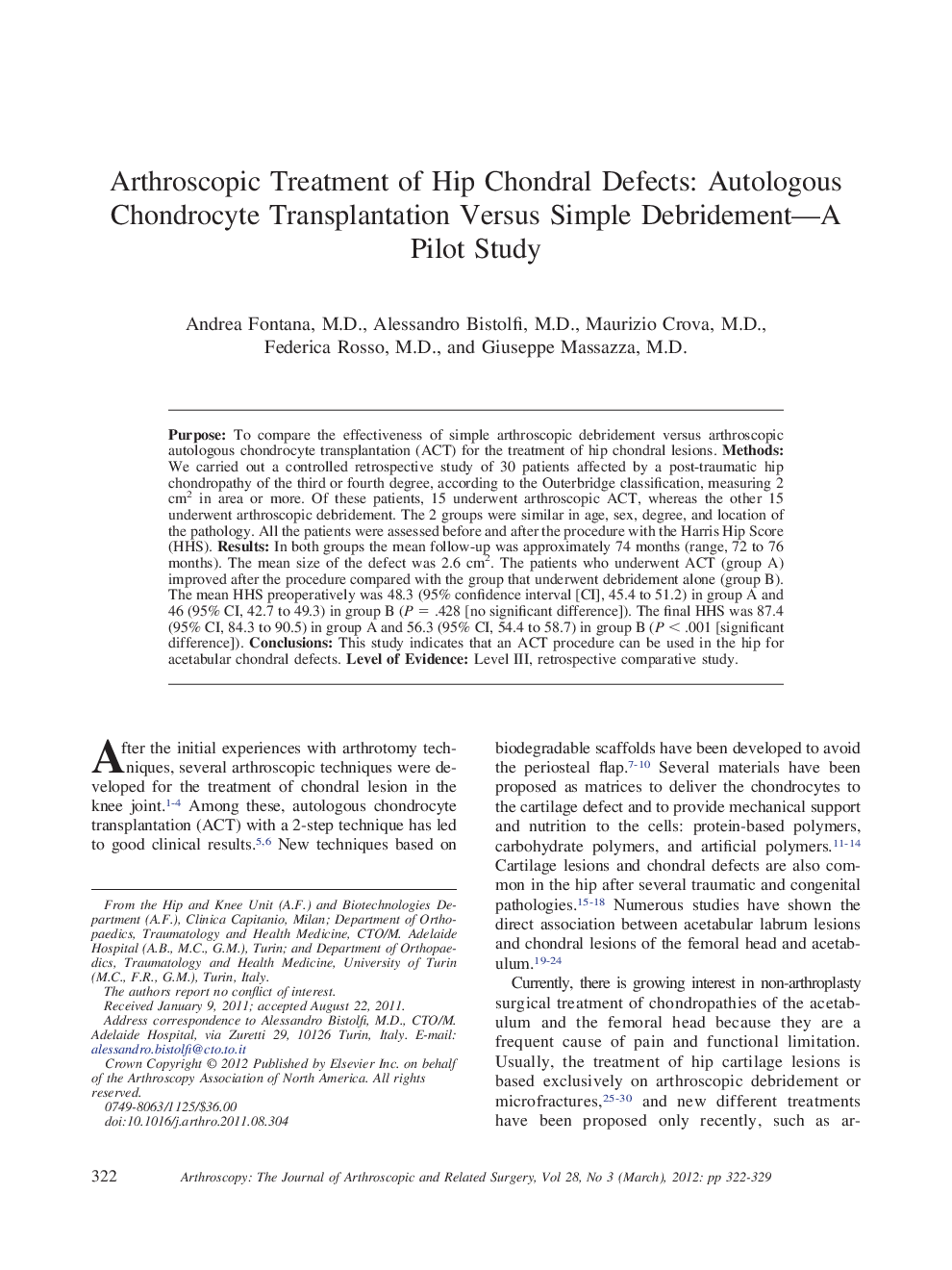| Article ID | Journal | Published Year | Pages | File Type |
|---|---|---|---|---|
| 4044808 | Arthroscopy: The Journal of Arthroscopic & Related Surgery | 2012 | 8 Pages |
PurposeTo compare the effectiveness of simple arthroscopic debridement versus arthroscopic autologous chondrocyte transplantation (ACT) for the treatment of hip chondral lesions.MethodsWe carried out a controlled retrospective study of 30 patients affected by a post-traumatic hip chondropathy of the third or fourth degree, according to the Outerbridge classification, measuring 2 cm2 in area or more. Of these patients, 15 underwent arthroscopic ACT, whereas the other 15 underwent arthroscopic debridement. The 2 groups were similar in age, sex, degree, and location of the pathology. All the patients were assessed before and after the procedure with the Harris Hip Score (HHS).ResultsIn both groups the mean follow-up was approximately 74 months (range, 72 to 76 months). The mean size of the defect was 2.6 cm2. The patients who underwent ACT (group A) improved after the procedure compared with the group that underwent debridement alone (group B). The mean HHS preoperatively was 48.3 (95% confidence interval [CI], 45.4 to 51.2) in group A and 46 (95% CI, 42.7 to 49.3) in group B (P = .428 [no significant difference]). The final HHS was 87.4 (95% CI, 84.3 to 90.5) in group A and 56.3 (95% CI, 54.4 to 58.7) in group B (P < .001 [significant difference]).ConclusionsThis study indicates that an ACT procedure can be used in the hip for acetabular chondral defects.Level of EvidenceLevel III, retrospective comparative study.
